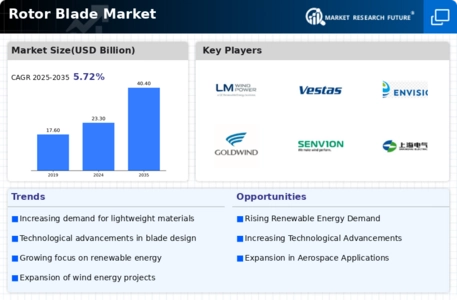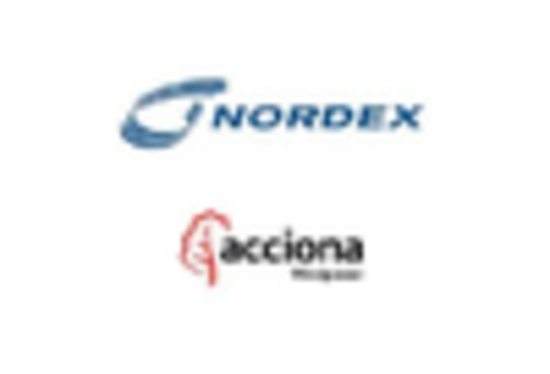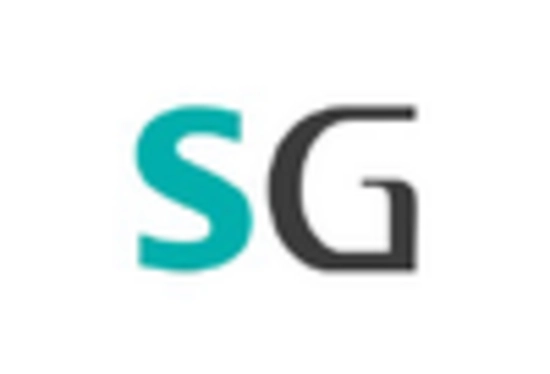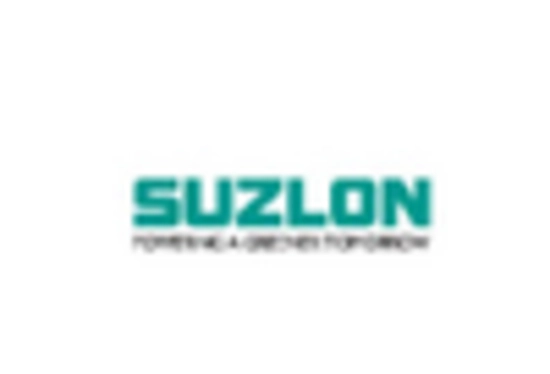Expansion of Offshore Wind Farms
The Rotor Blade Market is witnessing a notable expansion in offshore wind farms, which are becoming increasingly popular due to their higher energy generation potential. Offshore wind projects typically require larger and more efficient rotor blades to harness the stronger and more consistent winds found at sea. Recent reports indicate that the offshore wind capacity is expected to double by 2030, leading to a heightened demand for specialized rotor blades designed for marine environments. This shift presents both challenges and opportunities for manufacturers, as they must innovate to produce blades that can withstand harsh marine conditions. The growth of offshore wind farms is likely to drive investment and technological advancements within the Rotor Blade Market.
Growing Demand for Renewable Energy Sources
The Rotor Blade Market is significantly influenced by the increasing demand for renewable energy sources, particularly wind energy. As countries strive to meet their energy needs sustainably, investments in wind power infrastructure are on the rise. Recent statistics indicate that the global wind energy capacity has grown by over 15% annually, leading to a corresponding increase in the demand for rotor blades. This trend is expected to continue, with projections suggesting that the wind energy sector will require an additional 200,000 rotor blades by 2030. Consequently, manufacturers are focusing on scaling production capabilities to meet this burgeoning demand. The emphasis on renewable energy not only supports environmental goals but also drives economic growth within the Rotor Blade Market.
Regulatory Support for Clean Energy Initiatives
The Rotor Blade Market is benefiting from robust regulatory support aimed at promoting clean energy initiatives. Governments worldwide are implementing policies and incentives to encourage the adoption of renewable energy technologies, including wind power. For instance, tax credits and subsidies for wind energy projects are becoming more common, which in turn stimulates investment in rotor blade manufacturing. Recent data suggests that countries with favorable regulatory frameworks have seen a 30% increase in wind energy installations. This supportive environment is likely to foster innovation and competition among rotor blade manufacturers, as they seek to comply with evolving standards and capitalize on new opportunities. As regulations continue to evolve, the Rotor Blade Market is poised for sustained growth.
Technological Innovations in Rotor Blade Design
The Rotor Blade Market is experiencing a surge in technological innovations that enhance performance and efficiency. Advanced materials such as carbon fiber and composite materials are increasingly utilized, leading to lighter and more durable rotor blades. These innovations not only improve aerodynamic efficiency but also extend the lifespan of the blades. According to recent data, the adoption of these advanced materials is projected to increase by 25% over the next five years. Furthermore, the integration of smart technologies, such as sensors for real-time monitoring, is becoming more prevalent. This allows for predictive maintenance, reducing downtime and operational costs. As a result, manufacturers are investing heavily in research and development to stay competitive in the Rotor Blade Market.
Increased Investment in Research and Development
The Rotor Blade Market is experiencing a surge in investment in research and development (R&D) as companies strive to enhance product offerings and maintain competitive advantages. With the growing complexity of rotor blade designs and the need for improved efficiency, manufacturers are allocating significant resources to R&D initiatives. Recent data indicates that R&D spending in the rotor blade sector has increased by 20% over the past year. This investment is focused on developing innovative materials, optimizing blade aerodynamics, and integrating advanced technologies such as artificial intelligence for predictive analytics. As companies continue to innovate, the Rotor Blade Market is likely to see a proliferation of cutting-edge products that meet the evolving needs of the renewable energy sector.


















Leave a Comment